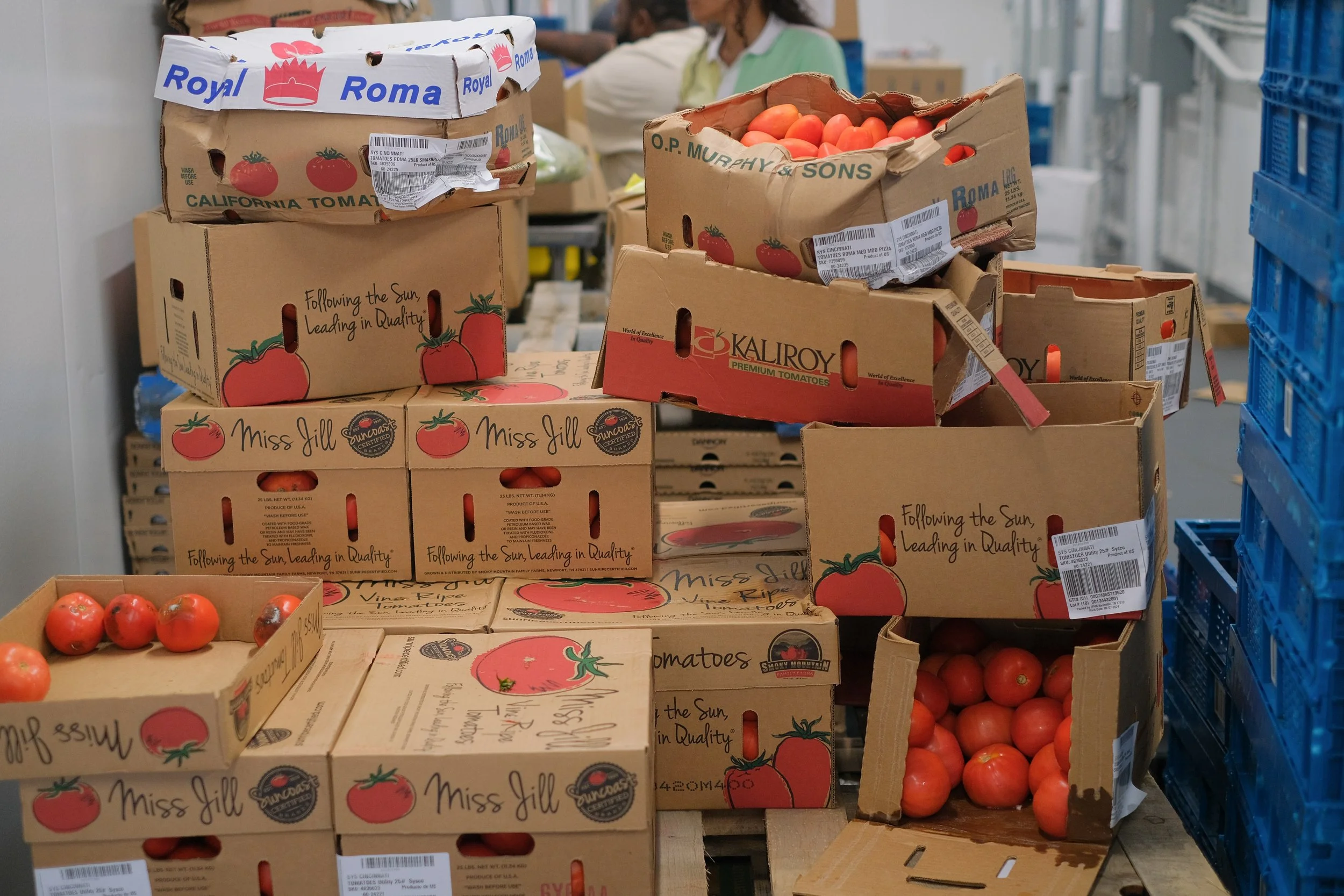From Rejected to Rescued: Building a Better Path for Declined Food Loads
By: Amy Scarpello, Senior Director Rescue, Share, and Volunteer Engagement
A rejected load of tomatoes delivered to La Soupe.
It doesn’t take long to read post after post of truck drivers venting about rejected loads of food and seeking advice from seasoned veterans on how to avoid sending quality products straight to a landfill, on the Reddit r/Truckers board.
In trucking terms, declined or rejected loads refer to shipments a carrier refuses to haul, either before or after pickup. Reasons vary: delivery dates or locations that do not work, paperwork issues, damaged goods, or products not meeting agreed-upon quality standards. Food is particularly vulnerable.
One frustrated driver shared on Reddit, “I have over 30 pallets of apples, and my load was rejected at Walmart because some of the apples were frozen. My boss told me to dispose of them since half of them are bad now.” Pallets, depending on the product, average about 2,000 pounds, or one ton.
Rejected loads can occur because of inaccurate delivery temperatures, vehicle crashes, minor quality concerns, labeling errors, and more. According to FreightWaves, rejected loads saw an uptick in several U.S. markets in early 2025, topping 12 percent in the Midwest over the winter. In trucking, a rejection rate above 10 percent is considered a significant issue.
Industry data confirms these concerns. The Outbound Tender Reject Index (OTRI) rose from 2.9% in May 2023 to over 6.4% by late 2024, then passed 10% after Christmas 2025—the highest since April 2022—driving more freight to the spot market and raising rates. The refrigerated market climbed even faster, with the Reefer Outbound Tender Reject Index (ROTRI) up 10% year over year.
At La Soupe, we see firsthand how rejected loads can still lead to recovery. Recently, several pallets of milk were rejected when a sudden hard stop caused them to shift off their pallets in transit. Our partners at Master Provisions got the call and stepped in to hand-unload the truck, saving the perfectly good milk. Our chefs used it in soupes, meals, and it was shared directly with our pantry partners.
What happens after a rejection largely depends on company policy and product volume. Some companies reroute food to warehouses to reclaim value. Others, especially in the case of small loads, leave it up to drivers, who are paid for transport, not for taking extra time to find a home for unwanted product. The easiest and most common option is disposal. That ‘dump it and move on’ approach comes from tight schedules, not from a lack of care. Most truckers do not like wasting food; they often lack alternative options.
This is where food rescue infrastructure can make a difference. If a driver is already headed toward a landfill, what if we could give them a convenient, pre-identified drop-off location instead? We know the will is there. What’s missing is the connection.
La Soupe is working with local and regional partners to create those connections. Organizations like JEE Foods and Last Mile Food Rescue are already active in this space. At the same time, La Soupe leans into our specialty of transforming recovered food to prevent local markets from being flooded with a single item, which can lead to additional spoilage.
In Indiana, the Food Drop program, developed by the Indy Hunger Network, has been doing exactly this since 2017. It pairs truckers with food banks willing to accept rejected loads that are still edible, using a simple website to connect drivers to the closest participating organization. The food banks receive large volumes of high-quality products, and the drivers can dispose of them quickly without having to stop at a landfill.
Across Ohio, La Soupe and our partners already receive some distressed loads, but the potential to capture more is significant. A coordinated system, modeled after programs like Food Drop, could dramatically increase how much food is rescued rather than wasted. It will take collaboration between trucking companies, food rescue organizations, and policymakers to streamline these efforts.
The path forward is clear: create consistent, simple, driver-friendly solutions so that “rejected” no longer means “wasted.” The apples, the milk, the produce with two bruised boxes, all of it could feed families instead of filling landfills. The sooner we make that the norm, the closer we will be to building a better path from rejected load to rescued food.

